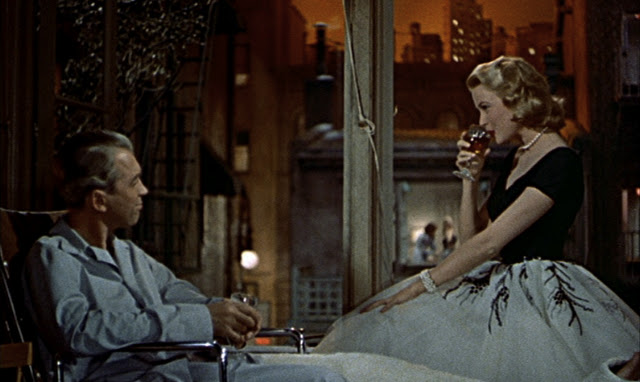WHAT: My friend Miriam Montag, who wrote a fine piece on Christian Marclay's The Clock earlier this week, still has more to say on that piece, but this time using it as a springboard to a refreshed appreciation of Zinnemann's Oscar-winning film, and particularly the above-pictured scene in which uses Pfeiffer Beach in Big Sur as a stand-in for a Hawaiian shore.
It is quarter to 3 at The Clock and possibly one of the cinema's most famous timepieces is having its moment: Harold Lloyd clinging to a massive minute hand high above the streets of downtown Los Angeles. The thrill that spreads through the room has a bit less to do with Lloyd's daring than the sense of recognition. In a work that largely avoided cinema's greatest hits, the inevitabilty of its inclusion felt so satifying. It's been excerpted in countless docs on the subject of Hollywood's clown princes and on and on. The editors of the New Yorker had no worries that readers would instantly get artist Barry Blitt's parody of the stunt when they put it the cover a few years back.
There's no way to know for certain, of course, but it's very likely few of those present that day at The Clock had seen Lloyd's Safety Last in its entirety, on film, video or cable. The San Francisco Silent Film Festival is only getting around to it this July, its 18th full festival. Yet that mad scramble up the clock springs has a place in a collective knowledge for both the casual viewer and the more ravenous one. For many years, this viewer didn't even realize it was part of a chase sequence, assuming Lloyd's dilema was the result of Stan Laurel-style tomfoolery.
What does this have to do with today's movie, Fred Zinnemann's stirring adaptation of James Jones's novel? It's that kiss.
When the long retired Deborah Kerr died in 2007, the kiss was predictably in the first line of her obit. It’s one of the most recognizable kisses in Hollywood history and seems to evoke the very title of the film it’s from: From Here To Eternity. Two lovers in a clinch that not even the surf of the Pacific could cool. In this film, set in the days leading up to the bombing of Pearl Harbor, nothing is that simple. Of course it’s not surprising that the affair is illicit, but the moments that follow the briny buss are still shocking.
See, Milt (Burt Lancaster) knew having an affair with his commanding officer’s wife Karen (Kerr) was gonna be messy, but he’s just caught wind of the fact that this affair is not her first time on the extramarital rollercoaster. He’s not letting her just-murmured declaration that "it’s never been like this before" go unchallenged. It gets ugly fast. How close does he come to calling her a slut? YouTube clips of this scene hover at about the 50 second mark, never including the spat, so a quick double check was not possible. Let's just say it gets close enough to be bracing to those who have experienced this cine-bite as the high point of romantic perfection.
(It's not even the best lip lock in movies, that honor must surely go to Cary Grant and Ingrid Bergman in Hitchcock's Notorious and probably about half of the spit-swapping sessions of Greta Garbo's career)
As a moment of steadfast devotion, it's about an even match with Prew's playing of taps for his fallen comrade in arms, Maggio. Prew (Montgomery Clift) and Maggio's (Frank Sinatra) struggles are bound up with the ironclad and ridiculous heirarchy of the military life. The cruelty, petty and otherwise, by those with respectable facades and power to abuse, coin of this realm. There's nowhere to run from the emnity they have provoked.
It's a rich plateful, what with the day that will live in infamy creeping up and all, too rich to be reduced to a romp on a towel. Sometimes a kiss is just a kiss.WHERE/WHEN: Tonight only at the Stanford Theatre at 7:30 PM
WHY: As I mentioned the other day, 2013 is Burt Lancaster's centenary year, and thus a perfect time to visit or revisit as many of his films on the big screen as possible; this relatively early film will set a good context for next week's 1960 Elmer Gamtry and 1980 Atlantic City at the Castro.
You can also consider this a warm-up for another Frank Sinatra picture playing the Stanford next week: Some Came Running. Considered by many to be director Vincente Minnelli's greatest masterpiece, and containing perhaps the best performances by Sinatra, Dean Martin and Shirley Maclaine, this is a real rarity to see on the big screen these days, and I'm going to make certain to be there myself. Full disclosure: I've never seen it, having waited for over a decade for an opportunity like this to see it in 35mm.
HOW: On a 35mm double-bill with another film taking advantage of Monterey location shooting, Fritz Lang's Clash By Night.




















